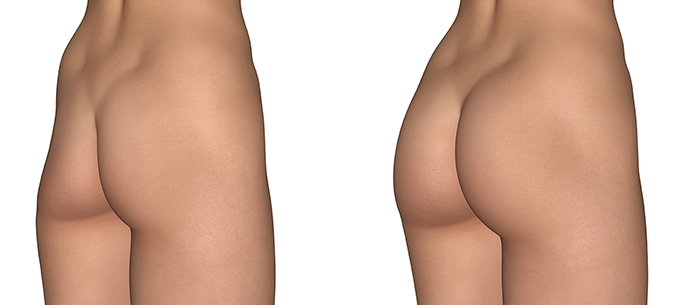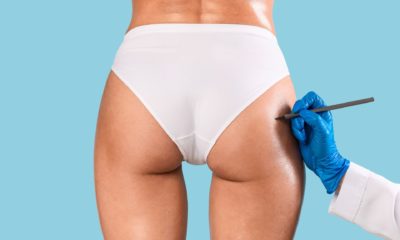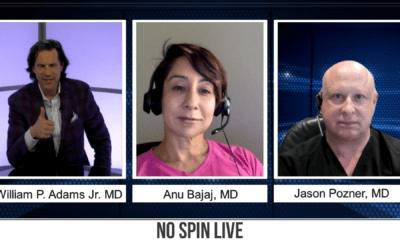Yet another news article details a patient death while undergoing fat grafting to the buttock. The trend is ongoing and all of the major organizations involved with plastic surgery are hard at work to identify the cause.
“This is absolutely horrible,” begins board certified plastic surgeon Dr. Jason N. Pozner of Florida. “This could happen to anybody, but what’s happened now is all of the societies are behind doing research as to why this is happening, how we can avoid this, and make buttock fat grafting safer for patients.”
Is the Surgeon to Blame?
This latest story of buttock augmentation with fat grafting ending in death starts with the unsettling past of the operating surgeon. His license was in doubt, and during a temporary stay of it, he was allowed to perform surgery and this death occurred on his table. Board certified plastic surgeon Dr. Steven Teitelbaum of Los Angeles notes the questionable aspects of the surgeon involved, but reminds that this issue has occured on the operating table of some of plastic surgery’s best surgeons.
“The first thing, a lot of people are blaming the deaths on this particular doctor in Florida. I don’t know this particular physician, but I’ve spoken on the phone with really good doctors. People I know to be good, who trained at good institutions. Conscientious people who’ve had deaths. We can’t just attribute this to bad surgeons.”
Dr. Teitelbaum is the immediate past president of ASERF, The Aesthetic Surgery Education and Research Foundation. He spear-headed a recent ASERF study on this topic regarding deaths during fat grafting to the buttock.
“The number of deaths is really scary. It’s staggering,” he explains. “It’s somewhere between one every 6 to 8 weeks. The deaths occur because of fat getting into those big vessels that Jason talked about: the superior and inferior gluteal vein, which is a straight shot up to the heart and lungs. The bottom-line is, after doing about 5 or 6 autopsies, in every case there was deep intramuscular fat with injury to one of those big veins. The ultimate lesson from that is the following: you can’t inject deep and you need to use instrumentation that really helps you avoid that area.”
Physician’s Credentials DO Matter – Even During Times of Research into Surgical Issues
It is certainly of note that the occurrences of death during fat grafting to the buttock has not led surgeons to believe that the problems stem from inadequacies with surgeons. That being said, surgical credentials are always of paramount importance, and the physician involved in the latest case has a questionable history at best.
“I don’t think it looks good that this particular physician was already sanctioned by the Florida medical board and the board’s position was that this physician should not have had his license,” shares Dr. Jason S. Cooper, himself a board certified plastic surgeon in Florida. “Unfortunately that position was overturned and in the interim this death occurred. I don’t know the physician either and it’s not really for me to say whether or not this physician and his record had any bearing on the outcome of this case. Unfortunately, it just doesn’t look very good and certainly doesn’t present very well for other people looking out at us as a specialty.”
Research and Investigations Continue, which Surgeon’s Must Follow and Appreciate
Death during fat grafting to the buttock is being heavily investigated by the best and brightest in plastic surgery. Physicians have zeroed in on some of the factors that attribute to it, and strongly encourage their peers to take the necessary precautions to prevent it.
One of those recommendations is the use of cannulas over needles, as the blunt tip of cannulas have a much harder time penetrating the veins with fat which ultimately leads up to the heart, potentially causing death.
“The point is, you can end up where you didn’t intend to be,” explains Dr. Teitelbaum. “In my mind, and from what I know, the smartest thing is to avoid the muscle at all costs and only inject subcutaneous. I do know that good people routinely go into the muscle and they do it safely. I know that if you really understand the anatomy and maintain constant control of your cannula tip, you should be able to be fine in the muscle. But I also know once you go below that muscle fascia, there are no clearly defined planes between superficial, mid, and deep muscle. Once you go into that muscle you’re playing a whole different game.”
The issue is of great concern considering that the procedure is fast becoming one of the most sought after surgical procedures. With the backing of all major plastic surgery societies, tests and research are being conducted to pave the way forward for a safer procedure.
In the interim, patients interested are advised to always seek out and verify credentials of the surgeon they’re consulting with. Board certification by the American Board of Plastic Surgery is a must, as well as membership to one or both of the major societies, the American Society for Aesthetic Plastic Surgery and the American Society of Plastic Surgery.

















Facebook
Twitter
Instagram
YouTube
RSS